From the streets of Paris to the newest hipster bakery around the corner, macarons are all the rage these days. These ethereal, jewel-colored treats are light and airy, sweet and chewy, and notoriously difficult to bake. But if you're not a dessert connoisseur, you might wonder why macarons are so expensive.
Macarons have become a dessert status symbol of sorts, prized for their beauty as much as their exquisite range of flavors and impossible texture. These little delicacies will set you back a pretty penny… even if you can easily devour a €30 box in mere minutes.
But hey, if you went to Paris and you didn’t snap a photo of these colorful desserts in their fancy Ladurée packaging, did you even go?

Macarons are high maintenance delights. And let’s be honest, you’re probably not going to make them yourself. The whole process requires the right supplies, ingredients, experience, and know-how, not to mention the time it takes to bake a perfect batch!
But that’s not the only reason the dainty delicacies are flying off the shelves these days. Macarons as a culinary trend have been building a fanbase for literally hundreds of years. In the US, however, we’re only a decade into truly figuring them out as bakeries, cafes, and cute dessert shops spring up to accommodate our growing desire for the trendy pastry.
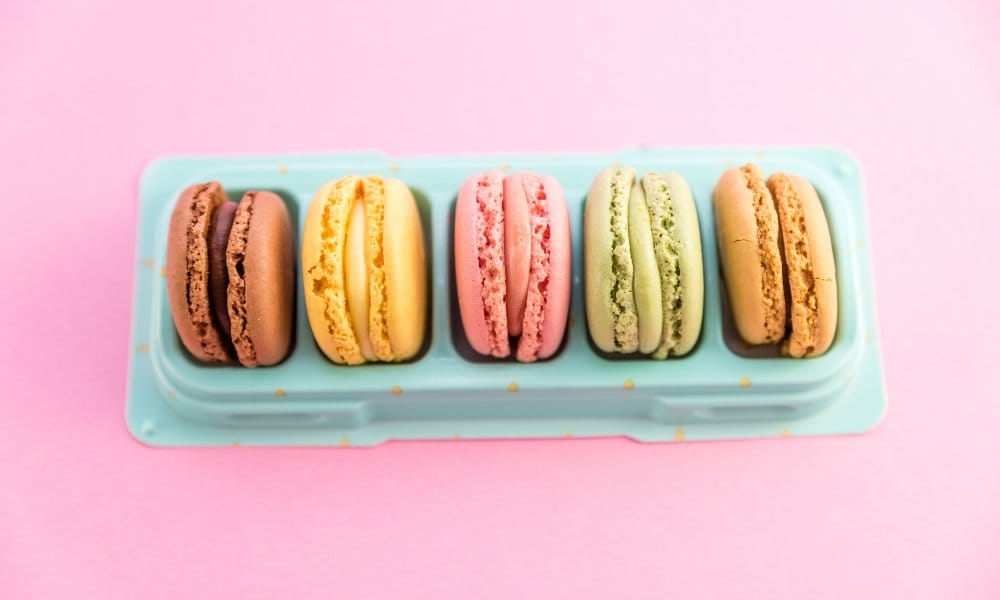
What Are Macarons?
Macarons are small, round, meringue-based desserts made from almond flour, sugar, egg whites, and sometimes a little food coloring. The filling can be anything you desire, although it’s usually a decadent or high-end ingredient like ganache, lemon curd, buttercream, candied fruit, or preserves.
While the list of ingredients may seem simple enough, the process of making a macaron is anything but.
Baking and assembling macarons requires quality ingredients, exact measurements, and plenty of time, patience, and practice to get them just right. Due to the dedication required and the temperamental baking process, most people prefer to shell out cash and simply buy them from a bakery instead. And that’s just part of the reason macarons are so expensive…

The Different Types of Macarons
Macarons can be made in an endless array of flavor (and color) combinations, making it possible for chefs to continuously experiment. At the famous Pierre Hermé bakery in Paris, for example, buyers can choose from luxurious flavors like “lemon caviar” and “hazelnut praline” and even “rose, raspberry, and lychee.”
When chefs compete to be the most daring, you can sometimes find savory flavors like bacon and foie gras. Hermé once shocked Paris with a ketchup and gherkin macaron. Selecting different macaron from such a huge variety of creative flavors is one of the more fun parts of this often stuffy-sounding pastry business.
As you might imagine, France lays claim to the invention of macarons. Well, at least the macarons we see produced by haute couture bakeries these days. But the idea of an almond-based cookie likely hails from Italy. There are both French and Italian methods of baking macarons – the difference lies in the way the meringues are formed, but the end results are pretty similar.
The Italian method often results in sweeter, more crumbly macarons, compared to their chewier, less sweet French counterparts.
One more thing. Don’t get these dainty pastries confused with the still delicious but much less refined (and easier to bake) coconut macaroons. You know, the chewy, lumpy things you ate as a kid. They hail from Italy and contain no flour of any kind. Chefs and bakeries frequently adopt the French spelling of “macaron” to avoid any mix-ups between these pedestrian morsels and their light-as-air, melt-in-your-mouth delicacies.

Why Do People Love Macarons?
Repeatedly accused of becoming “the new cupcake,” the macaron’s rise to fame is nothing new in the world of culinary trends. Since they first swept America a few years ago, macarons can now be found in craft bakeries, cafes, grocery stores, and fancy dessert shops all over.
They are both photogenic, delightfully delicious, and to make matters worse, they also fit in with today’s food trends and health crazes. Did you know they are one of the few baked goods that are naturally gluten-free?
It’s not just that they’re decadent, tasty, and lovely to look at though. Macarons feel special.
According to New York Times writer Ligaya Misha, “Your slacker boyfriend gives you a cupcake; your lover gives you macarons.”
Unlike, say, 10 years ago, macarons are now appealing more and more to the masses. You can now find them in grocery stores like Whole Foods, Publix, and Trader Joe’s, where you can buy them at much cheaper prices than those you’ll find in Paris, albeit sometimes frozen.
But since American consumers have only recently caught onto this old-world culinary trend, where exactly did macarons get their start? And is it possible to trace their rise to fame?
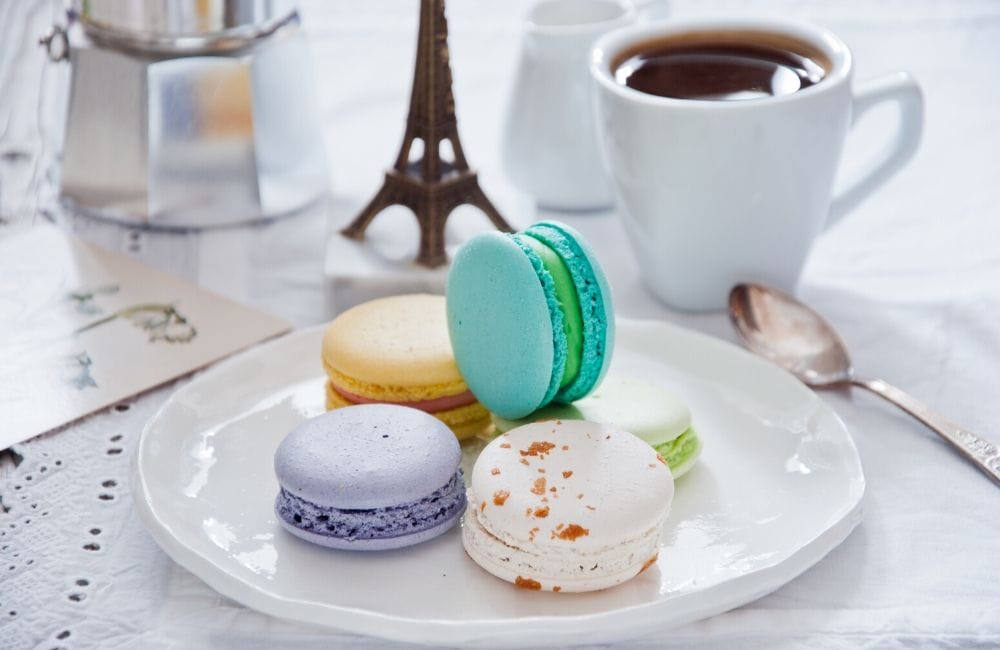
Obviously, They’re French… or Italian
Legend has it that macarons were first commercialized by two Carmelite nuns in the city of Nancy, France. Seeking asylum during the French Revolution, sisters Marguerite and Marie-Elisabeth sold these almond-based biscuits to pay their rent.
Initially, it’s believed that the macaron likely had its roots in the Middle East, the home of almond cultivation, where 10th-century desserts were made by combining powdered almonds with sugar and rose water. From there, almonds made their way across the sea to Italy, where they were used in a fine paste (or “maccherone”) to make cookies in the 1500s.
These simple almond-based cookies made their way into France some 30 years later with Catherine de’ Medici, who brought her Italian chef when she moved, obviously. During the 1600s and 1700s, macarons made appearances at royal affairs and weddings in France. But as far as we know, they weren’t widely available to the public until Les Soeurs Macarons (the “Macaron Sisters”) from Nancy began to sell them.

According to the iconic Ladurée tea room in Paris, the story of macarons as we know them today began in 19th-century France when a baker named Pierre Desfontaines had the brilliant idea of taking two delicate macaron shells and joining them together with a ganache filling, creating a much more refined version of the cookie sandwich.
Another French gentleman, Claude Gerbert, also lays claim to creating the modern-day macaron.
Either way, sometime in the 1830s, innovative folks in France decided to fill these almond biscuits with jellies, spices, liqueurs, creams, and marmalades to create the version of the macaron we know and love.

The Modern-Day Macaron
Macarons continued to evolve, becoming more refined and even more desirable among the affluent French. Their trendiness spiked in the 1900s when luxury bakery Ladurée began whipping up colorful, multi-flavored macarons in its flagship Paris store to accompany its fancy tea service.
In the 1990s, Fauchon, a patisserie, and competitor of Ladurée, started making macarons in flavors outside of the traditional chocolate, vanilla, raspberry, and coffee. They dreamed up flavors like olive oil and rose and soon began producing a “macaron of the month.” Other high-end macaron makers, including Ladurée and Dalloyau, quickly followed suit.
Ladurée created its own pistachio, rose, and salted caramel flavors, and soon enough, they were releasing new flavors every season like fashion designers. Since launching their macaroon à la mode campaign in 1999, Ladurée has seen sales jump from 3,000 macarons per day to 10,000 in 2002 and more than 15,000 in 2010.
They’ve expanded their macaron empire across the world. In the US, you can find Ladurée outposts in New York, Los Angeles, Miami, and Washington, DC. With over 100 stores worldwide, they've also made their way into Canada, Japan, Russia, Turkey, Saudi Arabia, and more.
Meanwhile, in Europe, the pastry itself was making its way into the hands of everyday consumers, popping up in McDonalds’ McCafes in France and Harrods department store in London.

When did Americans start to Crave Them?
While it’s uncertain when this little French confection initially made the journey across the Atlantic, Chef François Payard of NYC’s Daniel struck gold in 1993 when he offered a macaron to each of the restaurant’s customers.
But it wasn’t until the 2000s that the macaron became a culinary sensation in North America, dubbed by some as the hottest new gourmet treat around. In 2009, even Starbucks sold packaged versions for a limited time, making the dessert more available to mainstream American clientele. Grocery stores like Whole Foods, along with cafes and coffee shops, began carrying macarons as well.

The media is most likely what got Americans to finally take note of these colorful pastries. Sofia Coppola’s 2006 film Marie Antoinette is often credited with setting the trend. The movie made them look super decadent and appealing, surrounding Kirsten Dunst with mountains of the things (supplied by Ladurée, of course). Or perhaps it was 2013’s Great Gatsby, which depicted Leonardo DiCaprio as Gatsby sharing macarons with Daisy over tea?
Maybe the younger generation was tipped off by Gossip Girl’s Blair Waldorf, who eats Ladurée macarons in the bathtub but prefers Pierre Hermé when in Paris. As with many trends in the US, it may have even been Oprah’s doing.
Needless to say, by 2010, these babies were everywhere!
The fact that macarons are more available to the general public now hasn’t seemed to dim their spark. They’re seen by many as the perfect sweet treat – decadent, gluten-free, and only about 70 calories each (if you can manage to limit yourself to one, that is).
According to the global bakery team at Whole Foods, their macaron sales grew 40% during the year 2014 alone. It seems no one is immune to these dainty desserts and their Instagram-worthy appeal.
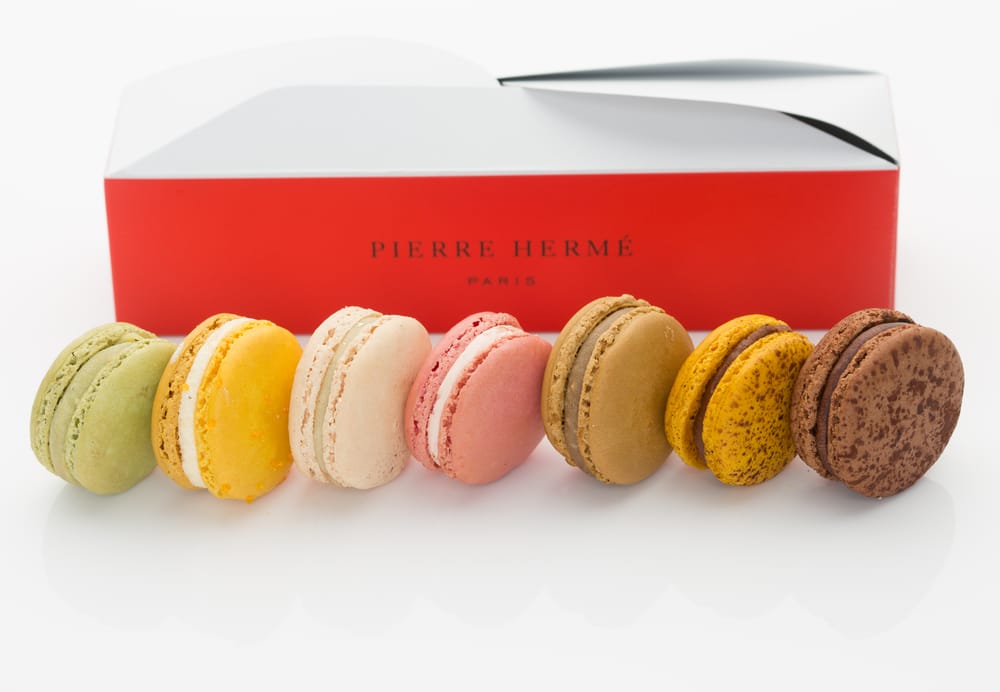
How Much Do Macarons Cost?
The price tag on a laughably small box of macarons might have you wondering if these pastries are mere desserts or culinary status symbols.
A box of six macarons by the experts at Ladurée Paris will run you $21 (that’s $3.50 per macaron). A box of 12 is only a slightly better deal at $41 (or $3.41 per macaron). You can have them delivered or schedule a pick-up at one of their stores.
The other big name in the macaron world, Pierre Hermé, prices his boxes of 12 macarons at €33.50 ($37.29 USD or about $3.11 each), but you’ll still need to pay for shipping from France!
With these brands, you’re buying the famous name and beautiful packaging that comes along with the pastries. But of course, you’ll also be able to post a photo on social media so that all your friends will be envious of your impeccably good taste. And who can put a price tag on that?
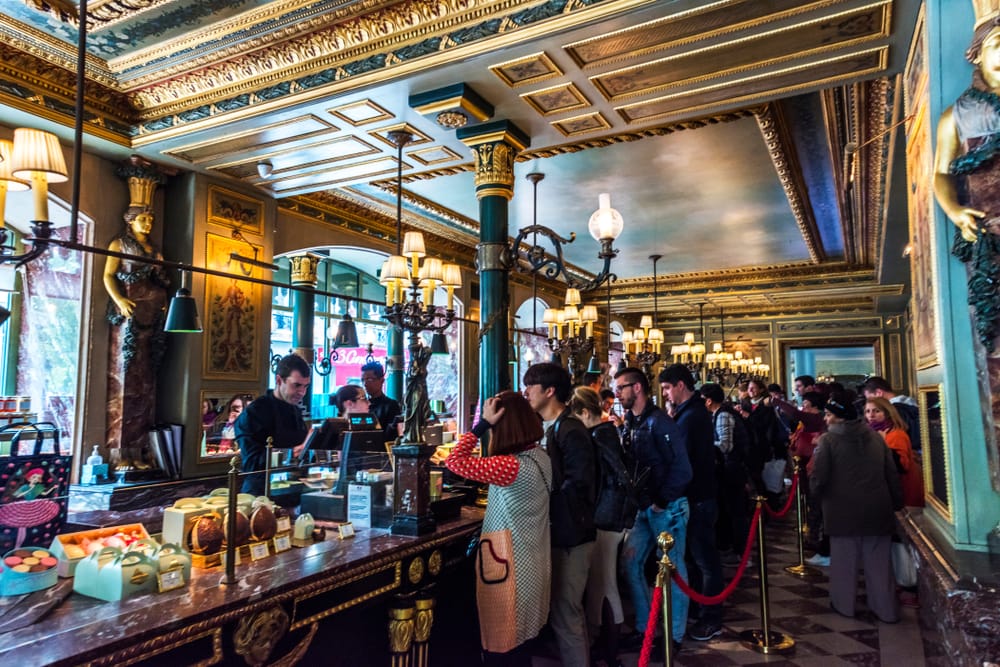
Even at large grocery store chains like Publix and Whole Foods, however, if you’re lucky enough to find them, you’ll still pay about $1.55 to $2.25 per macaron. Hey, these ain’t cupcakes!
Yes, these prices do seem a little precious considering you could easily polish off that box of six macarons and still have room for a second dessert course… but that’s not the point! Something about the simple purchase of macarons makes you feel like you’ve made it.
The Most Expensive Macaron In The World
When it comes to these tiny delicacies, the sky’s the limit when it comes to price – or rather, your wallet’s the limit. There’s a $9,700 macaron in Florida made with white tea and gold flakes that’s served in a Lalique crystal box. (Don’t worry, you get to keep the box.)
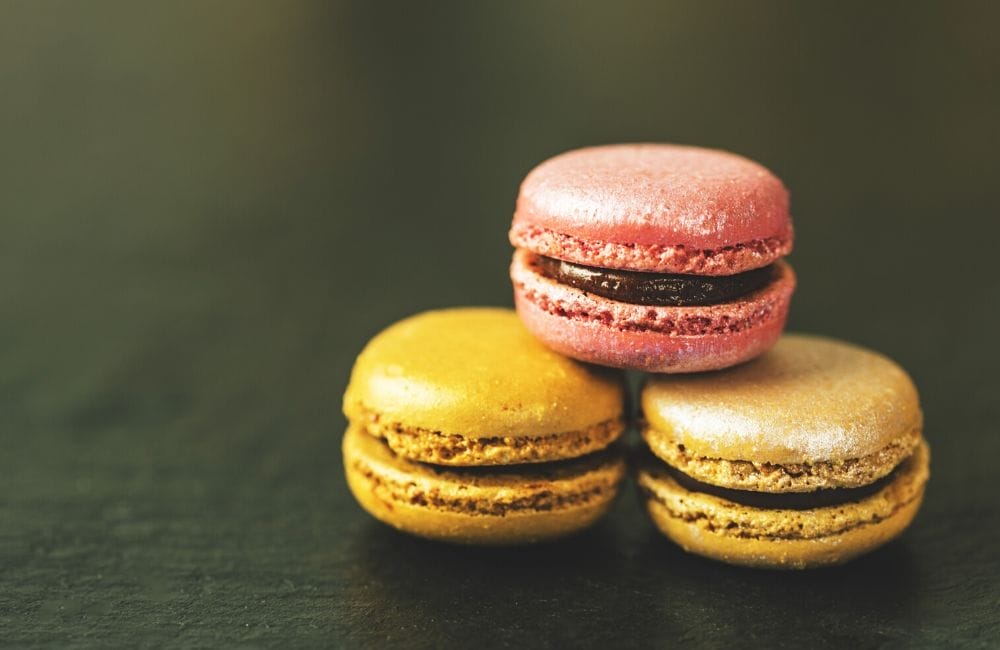
Why Are Macarons So Expensive?
So what’s with the seemingly outrageous price tag? The surprisingly high cost of macarons often comes down to three things:
- The labor-intensive and finicky baking process.
- The pricey ingredients required to make them.
- The high-end marketing that surrounds them.
The Macaron-Making Process is Difficult
Simply describing how a macaron is made cannot convey how difficult the process actually is. Unlike many baked goods, you’re very unlikely to master macarons the first time you slap on an apron… or the second or third. Even highly experienced pastry chefs can end up with less than perfect results if the slightest thing goes wrong in the baking process.
The two outer portions of the macaron – the “shells” – are highly temperamental. You must whip up a meringue with stiff peaks and then fold in the well-sifted, fine almond flour. While this sounds easy enough, you’ll need to be familiar with the desired consistency and make sure the batter falls in ribbons, passing what’s called the “Figure 8 Test.”
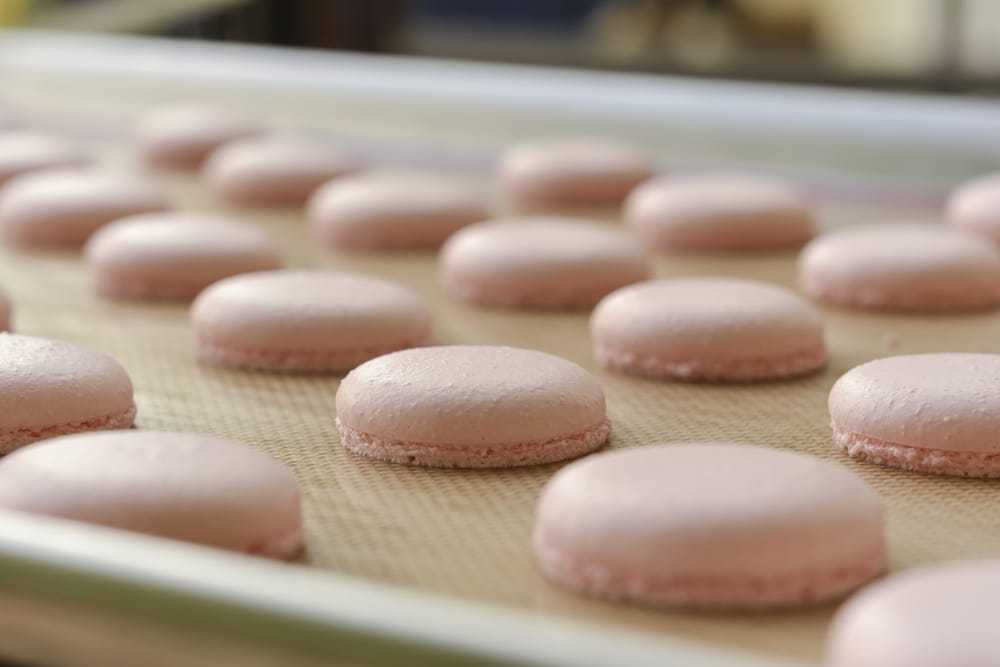
Of course, you have to be sure not to under-mix or over-mix the batter! Otherwise, you might end up with shells that are too stiff or too gooey. Improper mixing can also lead to hollow, crunchy, or hard shells, all of which would create sub-par macarons.
In order to be sold at reputable, high-end bakeries, the shells must come out perfectly round, uniform, and unbroken. If they aren’t usable, they’ll likely be wasted, which is baked into the cost of the end product. If possible, the shells might be used in other desserts, perhaps as decorative elements or in ground-up form, but that isn't always the case.
We’re still not finished! After piping the batter onto a baking sheet, your shells will need to rest until their peaks fall, and they obtain that perfectly round macaron shape. Once they’re in the oven, you'd better keep an eye on them! They should achieve a good rise while not becoming too puffy or too flat.
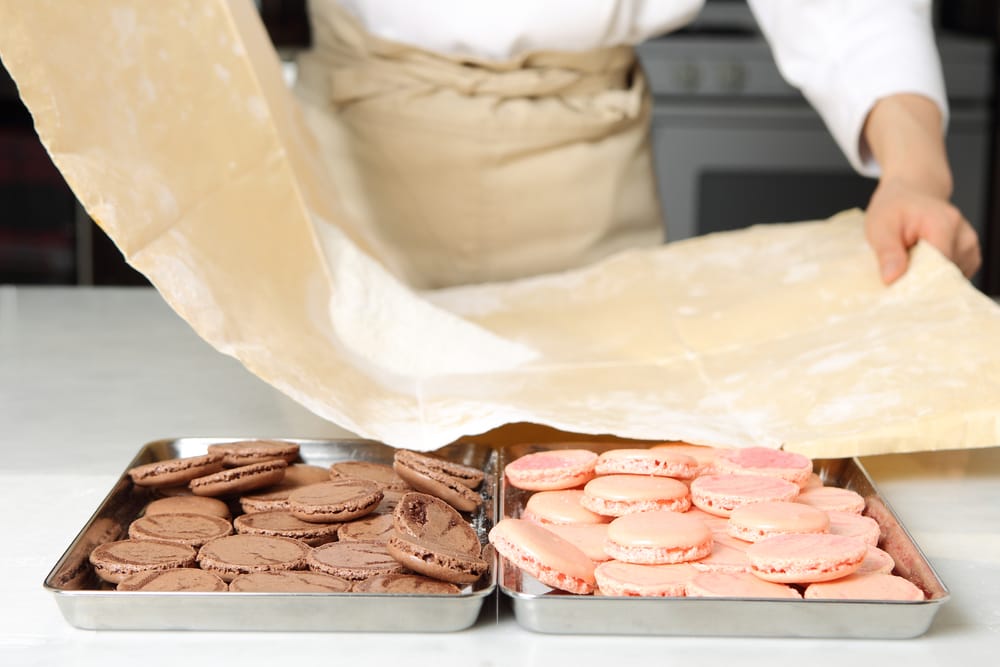
You’ll need more than just skill
Oh, there’s some equipment required also. Aside from piping bags, you need a digital scale to ensure you’ve measured your ingredients precisely (to the gram). You’ll also want silicone baking mats so that your shells develop that perfectly ruffled “foot” at the base – yes, that’s a term thrown around by macaron connoisseurs – but mostly because you need to remove the shells without breaking them. You wouldn’t want to get this far in the baking process and ruin all your hard work by having the shells stick to the baking sheet!
If anything goes wrong during any of these steps, you could lose the whole batch. Of course, you can also do everything right, and your macarons can still come out wrong. These delicate desserts can be affected by the humidity in the air (moisture is the enemy). Even the age of your egg whites can have an impact (they should be at least a few days old).
Due to the precise nature of macaron-making, it’s a notoriously difficult process to automate, scale, or complete in large volumes. Instead of a machine, most patisseries need to hire an experienced baker who’s up to the task, which only adds to the cost of the end product!
Ready to give up and order macarons online yet?

Macaron Ingredients Are Expensive
Say you manage to get this far in the baking process, and your shells come out of the oven lovely and uniform (not likely, but just go with it). Now you’ll want to make a nice buttercream filling, whip up a dark chocolate ganache, or grab some fancy jam.
At this point, the process feels similar to making homemade pasta – albeit with much more time and labor invested. After all the effort you’ve spent baking your macaron shells, you’d never want to fill them with sub-par ingredients. Only the best will do! Think high-end Madagascar vanilla for your buttercream or Ghirardelli bittersweet chocolate for your ganache.
Just be careful not to crush those delicate, eggshell-like tops as you ice them and press them together. If they’re cracked or smashed, you can’t put them in the display case…
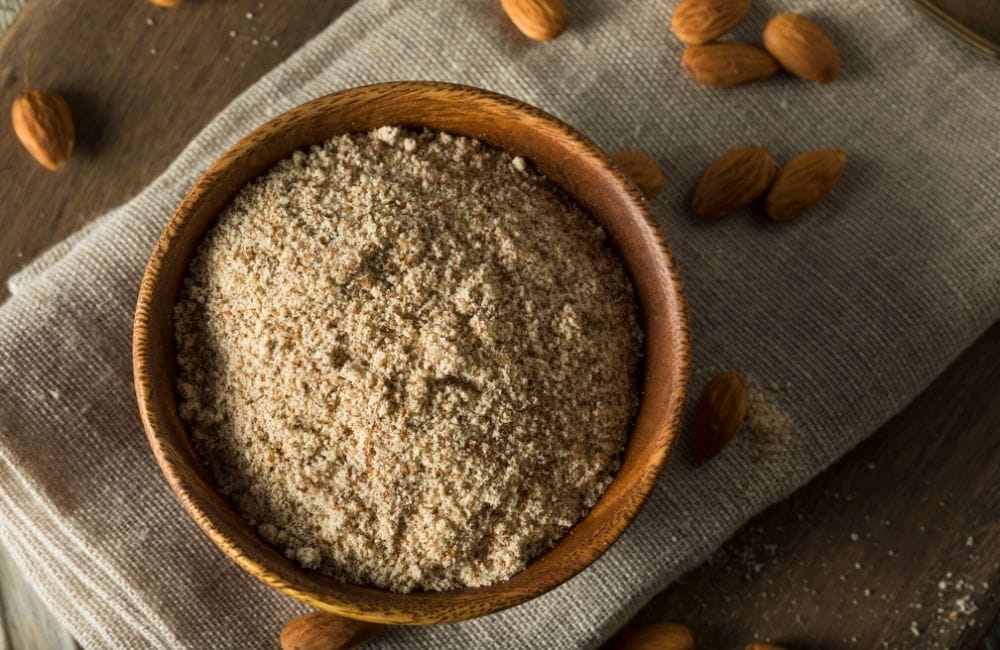
Speaking of ingredients, we all know how expensive almonds can be, even if you’re just buying the little snack packs. Well, get ready for almond flour: A two-pound bag at Wal-Mart will run you about $10.98. Compare that to a regular bag of all-purpose flour, which is $1.33 for two pounds. For the home baker, that means that almond flour will cost about 8.25 times as much as regular flour.
For large-scale bakeries, the cost is similarly expensive, even when buying in bulk. In the US, the cost of white flour was around $0.44 per pound in 2018. While we don’t have similar stats for almond flour, at Costco, you can find generic almond flour for $3.66 per pound.
That means baking with almond flour – even if you’re buying the giant 10-pound bags! – is about 8.3 times more expensive than traditional flour.
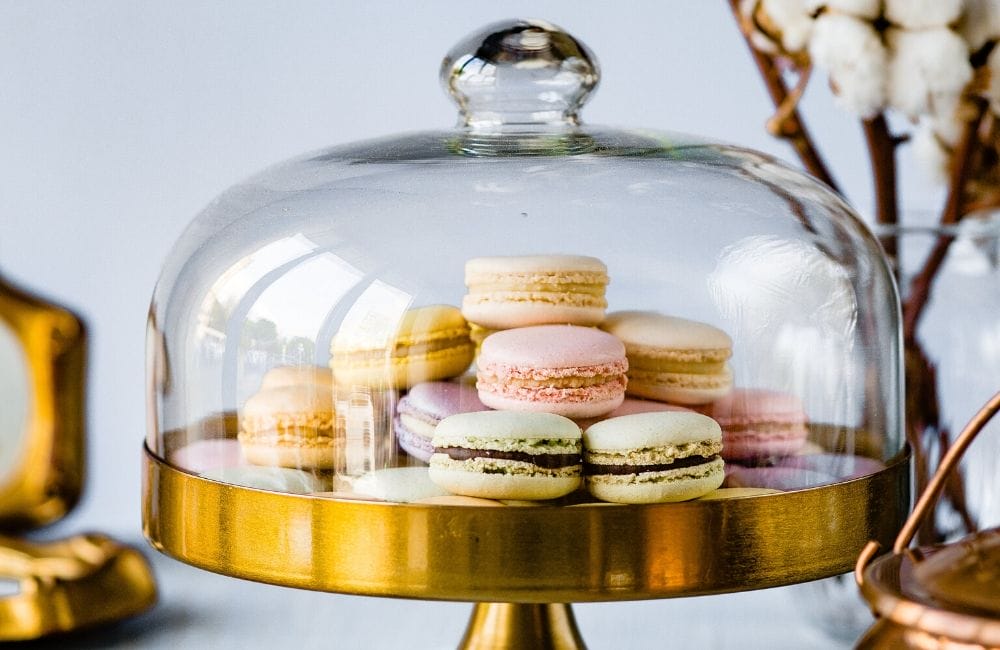
Marketing For An Upscale Market
In a way, macarons are expensive because they have to be. The target market for most high-end macaron bakeries is – you guessed it – the high-end crowd. Besides, Ladurée’s flagship store is located on the grand Champs-Élysées in Paris, and they’ve got to make rent!
Macarons are delicacies, and they are marketed as such. They’re a premium dessert purchased by someone with excellent taste and money to blow on frivolous, sugary treats. Dressed up in their fancy boxes, a selection of colorful macarons makes the perfect dinner party gift.
Sure, it’s possible macaron purveyors could cut costs, but that goes against their high-end marketing message and consumer expectations. Macarons are supposed to be exquisite, refined, and gourmet, and that messaging aligns with their high price point.
The finished product, therefore, had better live up to customers’ high expectations! That means no scrimping on cheaper ingredients or downplaying their value.
It’s no wonder that Ladurée advertises in the pages of Vogue and Elle, right next to high-end designer dresses, jewelry, and handbags. These are designer desserts, after all. But that kind of marketing real estate costs money, which further contributes to why macarons are so expensive.
Macarons are beautiful, labor-intensive, and delicious. Most people in the market for these French treats know to expect that gourmet price tag. And now you do too.
Next time you see these iridescent little delights in the store, you’ll know exactly why they cost so much. With flavors like “lemon caviar” and “black truffle,” what else would you expect?
That’s the sugary sweet taste of money~
